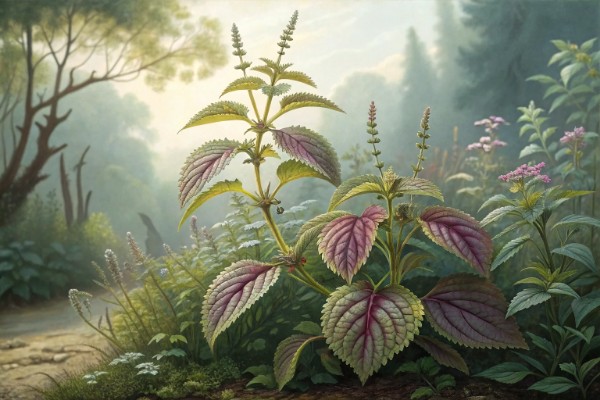Growing Sunchokes: How to Plant, Grow, and Enjoy Rich Harvests

Growing Sunchokes
Growing sunchokes rewards you with crisp, nutty tubers and vibrant blooms, thriving effortlessly in sunny, well-drained garden beds. Plant these hardy perennials in early spring, spacing them generously 18 inches apart to accommodate their towering stalks. Water regularly and mulch deeply to maintain moisture and suppress weeds, then step back and watch these edible roots flourish into a tall, sunflower-like spectacle. Curious to discover more about cultivating and harvesting these quirky tubers? Read on for simple, practical tips on how to grow and savor your own homegrown sunchokes.
I grow sunchokes for their flavor, their grit, and their sheer yield-per-square-foot swagger. They behave like sunflowers that decided to stash dessert underground.
Meet the plant
Sunchokes (Helianthus tuberosus) are perennial sunflowers grown for knobbly, crisp-sweet tubers. They thrive in zones 3 to 9, shrugging off frost and poor soil better than most roots.
They’ll hit 6 to 10 feet tall (1.8 to 3 m) and throw gold blooms in late summer. The tubers store a prebiotic carbohydrate called inulin, which sweetens after frost.
Site and containment come first
Pick full sun for best yields, at least 6 to 8 hours daily. Give them a corner where spreading is fine, or trap them like bamboo.
I ring beds with deep edging to 18 inches (45 cm) and pull strays fast. A bottomless stock tank or a 30 gallon container works if you water well.
Soil prep for Growing Sunchokes
Loosen soil 12 to 18 inches deep (30 to 45 cm) and pull out rocks, since tubers fork around obstacles. Aim for pH 5.8 to 7.0 and mix in 1 to 2 inches (2.5 to 5 cm) of compost.
Go light on nitrogen or you’ll grow skyscrapers and small tubers. Potassium helps bulking, so I add kelp meal or wood ash sparingly if a soil test shows low K.
Planting: timing, spacing, depth
Plant certified disease-free seed tubers in early spring when soil can be worked, or in late fall where winters are steady. I use pieces with 2 to 3 eyes, whole if smaller than a walnut.
Set them 3 to 5 inches deep (7.5 to 12.5 cm) and 12 to 18 inches apart (30 to 45 cm), with rows 2 to 3 feet apart (60 to 90 cm). Water in, then mulch 2 inches (5 cm) for moisture and weed control.
“Jerusalem artichoke is a hardy, perennial sunflower cultivated for its edible tubers.” — USDA plant guide
Water and feeding rhythm
Give about 1 inch (25 mm) of water per week in dry spells. Deep, infrequent watering builds thicker, sweeter tubers.
Side-dress with compost at knee-high. Skip heavy manure, especially in alkaline soils, to reduce scab risk.
Growth management
Sunchokes act like a living privacy fence, which I use to shield tender beds from wind. In gusty sites I tie plants to a wire down the row at 3 and 5 feet high (90 and 150 cm).
If space is tight, pinch the top at 5 feet (1.5 m) to reduce lodging. You’ll still pull a strong crop.
Pest and disease watch
Deer relish the foliage and voles steal tubers, so fence tall and trap or use underground baskets where voles tunnel. Wireworms and grubs can pock tubers in lawns recently converted to beds.
Common issues include powdery mildew late season and sclerotinia white mold in soggy soils. Keep rows airy and rotate out of sunflower family patches for 3 years if disease shows up.
Harvest timing and technique
Start 110 to 150 days after planting, and flavor peaks after a hard frost at 28 F or lower (-2 C). I dig the first taste after the top dies back, then leave the rest in soil for winter storage.
Use a digging fork to lift from the side and work inward. Expect a second crop from small tubers you miss, so be ready to edit volunteers next spring.
Storage that keeps texture
Best storage is in-ground with 6 inches (15 cm) of straw or leaves in cold climates. For indoor stash, keep unwashed tubers at 32 to 34 F (0 to 1 C) and 90 to 95 percent humidity in damp peat or sand.
They dehydrate fast in a dry fridge. I bag them with a paper towel and punch a few holes to breathe.
Yields you can bank on
In decent soil, I see 2 to 5 pounds per plant (0.9 to 2.3 kg). A 10 foot row can run 10 to 20 pounds if watered and mulched well.
“Plant as soon as soil is workable, and expect heavy yields with minimal inputs,” summarizes multiple U.S. extension bulletins on Growing Sunchokes.
Culinary notes, flavor, and gut comfort
Raw, the crunch reminds me of water chestnut with a nutty-artichoke edge. Roasted at 425 F (220 C) they caramelize and taste like a potato met a pear.
Inulin can cause gas for some people. I par-cook, then roast, or ferment and pickle, which trims the inulin bite without losing snap.
- Roast: cut into 1 inch (2.5 cm) chunks, olive oil, salt, 30 to 40 minutes, finish with lemon.
- Soup: sweat leeks, add sunchokes and stock, simmer 20 minutes, blend silky.
- Ferment: 2 percent salt brine by weight, 7 to 10 days at 60 to 70 F (16 to 21 C).
- Chips: slice 2 mm thin, fry at 350 F (175 C), sprinkle smoked paprika.
Top varieties for Growing Sunchokes
- Fuseau: long, smooth tubers that scrub clean fast, mild flavor.
- Stampede: high yield workhorse with knobbier tubers, great for roasting.
- Clearwater: bright white flesh, sweet after frost, easy slicing.
- Red Fuseau: pink skin, crowd-pleasing color in pickles.
- Albik and Gigante: European picks with strong bulking and uniformity.
Smoother types save sink time if you sell to restaurants. Knobby types often win on yield and earthy depth.
Container growing, scaled right
Use 20 to 30 gallon pots (75 to 115 L), one or two seed pieces per container. Fill with a rich, well-drained mix and water steady since pots dry fast.
Expect smaller yields than in-ground. The tradeoff is clean harvest and zero spread.
Companions and fieldcraft
I grow basil and bush beans on the sunny edge early, then let sunchokes take over the sky by midsummer. Keep them away from shorter crops that need full light all season.
Flowers draw bees like a street taco stand at lunch. That traffic lifts pollination in the rest of the garden.
Cleanup and rotation
After the first big dig, I chase sprouts for two springs to reset the bed. Any sliver can regrow, so patience pays.
Rotate away from sunflowers and related crops for 3 to 4 years if disease appears. Mulch the bed in fall to keep soil life humming.
Buying guide and smart sourcing
- Seed tubers vs grocery tubers: buy certified stock for true-to-type plants and cleaner starts.
- Timing: order in winter, ship in late winter to early spring depending on your zone.
- Quantity: 1 pound (0.45 kg) plants an 8 to 12 foot row if pieces are walnut-size.
- Containment gear: deep edging to 18 inches (45 cm) or large bottomless planters.
- Soil test kit: target pH near neutral and adequate potassium for tuber bulking.
Extension offices often list regional suppliers with clean stock. I also ask market growers which variety their chefs reorder, then I plant that one.
Health and nutrition snapshot
Sunchokes carry fiber, iron, and potassium, with inulin as the standout prebiotic. A 1 cup serving delivers satisfying carbs without starch-heavy heft.
“Tubers are rich in inulin, a non-digestible fructan that supports beneficial gut bacteria,” notes multiple food science references.
Common problems and my fixes
- Tiny tubers: plant earlier, thin to 12 inches (30 cm), water during bulking in midsummer.
- Mildew: widen rows, avoid overhead water late day, clip lower leaves for airflow.
- Vole raids: trap corridors with hardware cloth guards around seed pieces.
- Off flavors: wait for frost for sweeter tubers, store cool and humid.
Comparisons gardeners ask about
- Sunchokes vs potatoes: sunchokes are perennial, inulin-rich, and frost-sweetened; potatoes are annual and starch-heavy with tighter storage.
- Sunchokes vs yacon: yacon needs a longer, warmer season and makes juicy, apple-like tubers; sunchokes handle cold, make dense, nutty roots.
- Sunchokes vs dahlias: both make edible tubers, but sunchokes win on yield and cold hardiness, while dahlias shine in flowers.
Calendar cheat sheet for Growing Sunchokes
- Late winter to early spring: prep beds, plant tubers as soon as soil works.
- Late spring: mulch, tie windward side, side-dress compost.
- Midsummer: steady water, pinch tops if needed, watch for mildew.
- Fall: harvest after frost, store in soil or cold and humid indoors.
Field notes from a stubborn patch
I learned the hard way that one missed pinky-nail tuber equals a surprise spring hedge. Now I harvest, then re-dig the bed two weeks later and catch the stragglers that call my bluff.
On the upside, that persistence delivers buckets of food from a strip of ground potatoes gave up on. In a year that ran dry, sunchokes still paid the rent.
Helpful sources I trust
- USDA plant guides for Helianthus tuberosus on hardiness, growth habit, and management.
- University extension bulletins from Maine, Minnesota, and Oregon for planting depth, spacing, and storage protocols.
- Peer-reviewed food science texts on inulin and fermentation for gut-friendly prep methods.
Those references match what I see in the field. The plants pull their weight if you give them sun, space, and a bit of leash.
Cheatsheet: Sunchoke Planting & Harvest Guide
🌱 Planting Timing & Tips
- Start in early spring, after frost (soil 50°F/10°C).
- Space tubers 12–18 in (30–45 cm) apart, 4 in (10 cm) deep.
- Pick full sun; loose, fertile, well-draining soil boosts yields.
- Yields: Up to 1 ton/1000 sq ft (45 kg/10 m²).
🛒 Tools and Products You'll Need
- Sunchoke (Jerusalem artichoke) tubers
- Spade or garden fork
- Compost or organic fertilizer
- Mulch (straw, leaves)
- Watering can or hose
- Sharp knife (for harvest)
- Harvest basket or crate
🌞 Growing & Care
- Water deeply every week (1 in/2.5 cm), especially in drought.
- Mulch to suppress weeds and retain moisture.
- Add compost monthly for richer tubers.
- Tall plants: stake if windy.
- Minimal pest/disease risk; rarely needs spraying.
🔪 Harvest & Storage
- Ready in 120–150 days (mid–late fall).
- Wait for first light frost—sweetens flavor.
- Lift tubers gently with fork. Harvest as needed (they store in-ground).
- Brush off soil, store in fridge up to 3 weeks.
🍴 Nutrition & Enjoyment
- High in inulin (prebiotic), potassium, iron, fiber.
- Low glycemic, gut-friendly, ideal for diabetics.
- Eat raw, roasted, sautéed, or blended into soups.
- Pro tip: Soak slices in lemon water to reduce browning.
♻️ Self-sufficiency Benefits
- Perennial: returns yearly with minimal effort.
- Drought-tolerant, few inputs, stores well in-ground all winter.
- One-time planting yields decades of food.
Frequently Asked Questions About Growing Sunchokes
What is the ideal planting time for sunchokes?
The optimal planting window for sunchokes occurs in early spring after the risk of frost passes or during late autumn, approximately 2–3 weeks before the ground freezes. Planting during these periods provides the tubers ample opportunity to develop strong roots.
How deep should sunchoke tubers be planted?
Plant sunchoke tubers about 4–6 inches (10–15 cm) deep and spaced roughly 12–18 inches (30–45 cm) apart. This spacing allows healthy growth and adequate airflow between plants.
What soil conditions do sunchokes prefer?
Sunchokes thrive in loose, well-draining soil with neutral to slightly alkaline pH levels (6.5–7.5). Amend heavy clay soils by adding organic matter or compost to improve drainage and soil texture.
How much sunlight do sunchokes require?
Ensure sunchokes receive full sun exposure, ideally 6–8 hours per day. Adequate sunlight promotes taller growth and increases tuber yields.
How frequently should sunchokes be watered?
Water sunchokes regularly, maintaining consistently moist but not waterlogged soil conditions. Providing approximately 1 inch (2.5 cm) of water weekly supports robust root and tuber development.
Do sunchokes require fertilization?
Although sunchokes grow well in moderately fertile soil, applying balanced organic fertilizer early in the growing season can support healthier foliage growth and increased tuber production.
What companion plants benefit sunchokes?
Pairing sunchokes with companion plants like beans, cucumbers, and spinach benefits plant performance by improving soil nutrients, deterring pests, and conserving moisture.
When are sunchokes ready for harvest?
Sunchokes typically mature and become harvestable approximately 120–150 days after planting, usually in late autumn after the plant foliage has died back. For added sweetness, consider harvesting after the first frost.
How can harvested sunchoke tubers be stored properly?
Store freshly harvested sunchoke tubers in cool, humid environments at temperatures ranging between 32–40°F (0–4°C). Keeping the tubers in slightly damp sand or peat moss maximizes storage life and quality.
Growing sunchokes isn’t just about planting tubers and waiting for a miracle. These rugged, sunflower-like perennials demand a patch of loose, rich soil and a good bit of sun. Give them space, control their spread, and you’ll be rewarded with nutty, crisp tubers that thrive where others quit. Harvest after frost for the sweetest flavor, and remember: they store better in the ground than in your fridge.
If you’re looking to expand your patch of unusual edibles, consider duck potato or rutabaga—both bring something new to the table. But nothing beats the wild abundance of sunchokes. Grow them once and you’ll never look at a root vegetable the same way again. Dig in, eat well, and let your soil—and your table—tell the story.



